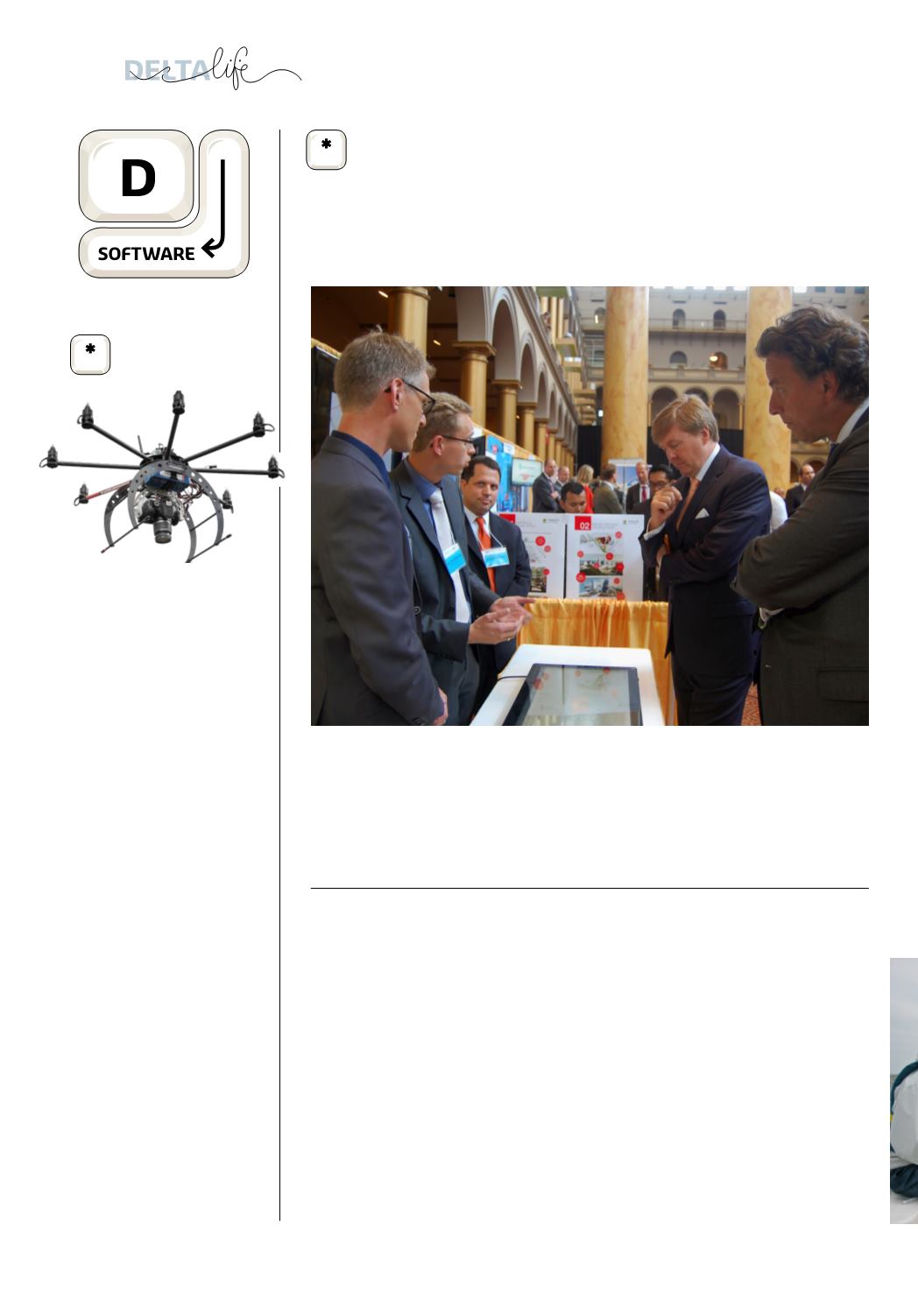

28
DELTARES, SEPTEMBER 2015
King Willem-Alexander
interested in Aqueduct
The new Aqueduct tool, which predicts floods, makes it possible to take the appropriate measures in
time to prevent a disaster or to limit damage. At the Global City Teams Challenge Expo in Washington,
flood expert Hessel Winsemius of Deltares demonstrated the Aqueduct Global Flood Analyzer for King
Willem-Alexander and Foreign Minister Bert Koenders. Aqueduct is a public tool that maps out river
floods throughout the world. The demonstration included the development and application of Aqueduct,
and it showed how stakeholders can use the tool to estimate and mitigate flood risks worldwide.
A drone that can lift up
to 8 kg, with the prospect
of a machine that can
manage up to 30 kg in the
future. Deltares is using
new technology to make
research more economical
and efficient. In this way,
increasingly heavy specialist
monitoring equipment and
cameras can be used in the
field to look at locations
that are difficult to reach.
Currently, the focus is
primarily on investigating
applications for geophysical
fieldwork and sampling in
open water. This approach
will also make it possible
to identify dike leaks
better from the air. A water
authority has already said
they are interested in using
drones for dike inspections.
The precise approach required
is now being studied.
Drones
make
field research
easier
Delft-FEWS
for water quality and ecology
Data about water quality and ecology are gene-
rally collected using samples. However, samples
are difficult to manage in the water information
systems available at present. In order to stream-
line data processing and analysis, new functio-
nalities have been developed in the Delft-FEWS
software. The added functions make it easier to
import, filter, save and export ecological data in
a structured way. One of the new functions is a
sample viewer. It generates an overview of the
properties of each sample such as the sampling
method and the laboratory. In addition, it is now
possible to switch between the local and Latin
names. The system gives users a quick overview
of the data obtained during monitoring and
helps to structure those data.



















